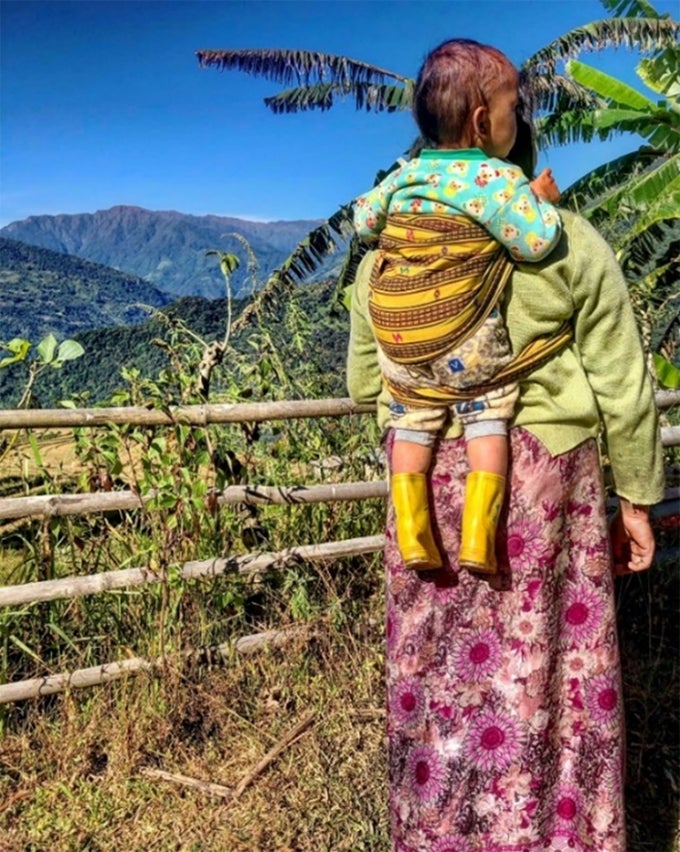
Bhutan is no ordinary place.
A landlocked Himalayan kingdom tucked in a mostly rugged mountainous terrain between India and China, it measures prosperity by assessing its citizens’ level of happiness by way of a Gross National Happiness index.
Equally striking, Bhutan’s constitution mandates that 60 percent of its national land be preserved under forest cover, making Bhutan the world’s only carbon-negative country.
Bhutan’s geography – with land rises ranging from 200 meters in the southern foothills to 7,000 meters in the high northern mountains – consists of three major agro-ecological zones that allow for a rich biodiversity and seasonal foods.
This natural wealth, however, comes with its caveats as Bhutanese living in isolated rural areas can’t access a reliable diverse diet throughout the year.
"Many families in rural Bhutan practice two meals rather than three meals a day," reports Ms. Kinley Bidha, Tarayana Foundation Field Officer in Samtse Dzongkhag. "Some for cultural reasons, others due to a shortage of food, others due to a shortage of land too farm," she adds.
Overall socio-economic development in the last three decades has led to a rapid improvement in health and nutrition outcomes in Bhutan – the country’s infant mortality rate declined to 30 per 1,000 live births in 2012 down from 90 per 1,000 in 1990; while the rate of stunting in children under 5 years declined 24 percent from 1986 levels.
Nonetheless, the lack of variety of foods in diet remains a key concern, especially for pregnant and nursing women as well as young children. And while most families feed their children complementary food, fewer than a quarter of parents provide them nutritious meals essential to their health.
In addition, 67 percent of Bhutanese adults consume less than the recommended five servings (or 400 grams) of fruits and/or vegetables per person a day [National Nutrition Survey (NNS) 2015].
When consumed, vegetables consist for the most part of two national staples, potatoes and chilies, which hardly provide essential vitamins and minerals.
Keeping regional variations in mind, between 16 and 34 percent of children under 5 are stunted—or too short for their age—seven percent of children are underweight, 35 percent of children of age 6-59 months and 44 percent of women of reproductive age are either anemic or iron deficient. Exclusive breastfeeding rates for six-month-old children remain at a low 50 percent (NNS, 2015).
Damages caused by malnutrition during pregnancy and the first years of a child’s life are irreversible and contribute to stunting and lower immunological and cognitive development , and predispose to adult-onset diseases (including metabolic syndrome).
Thankfully, the negative impact of malnutrition on Bhutan’s economy is now better understood and has become a priority to promote its national development.

The 1,000-Day Window of Opportunity
The 1,000 days between a woman’s pregnancy and her child’s second birthday offer a unique window of opportunity to prevent malnutrition, reduce stunting, and optimize a child’s cognitive and physical development.
A 2014 World Bank report on Nutrition in Bhutan points out that the most important causes of stunting are poor nutrition and care of women before and during pregnancy as reflected in the profound female anemia rates.
Ongoing efforts are being made to cover these shortcomings and to further improve maternal nutrition, child feeding, and household sanitation.
To that end, Bhutan’s Ministry of Agriculture and Forests with the collaboration of the Ministry of Health recently started a pilot project to improve nutrition during the 1,000-day window of opportunity in rural households.
With support from the South Asia Food and Nutrition Security Initiative (SAFANSI), the project will identify change agents and drivers of food habits and engage target groups in exploring innovative behavior change communication interventions in Samtse Dzongkhag – one of the twenty districts in Bhutan.
Tarayana Foundation, a local civil society organization will mainly implement the project in collaboration with the government.
Story-telling will play a central role in promoting care practices and changing healthy and dietary habits and practices. Testimonials, life stories, and images will help convey positive messages—rather than disapprove of bad customs—and thus encourage changes in behavior and practices. Improvement in knowledge, attitudes, and practices amongst project area beneficiaries will be assessed as measures of success.



Join the Conversation